It is a bumper year for slugs. After a mild winter and constant wet weather legions of them have fed on our plants, their numbers extraordinary and the damage worse than anything we’ve seen before. Yet slugs and snails are a constant presence in our gardens and we’re beginning to realise we need to keep them that way. As well as living plants they eat decaying material, helping to break it down and adding nutrients to the soil in the process. They also form an important part of the food chain for birds, hedgehogs, frogs and toads.
You may also like
- Ten of the best organic slug controls
- Are we really ready to make friends with slugs and snails?
- Nigel Slater on planting failures
- Here's 17 vegetables to grow that slugs don't like
Learning to live with them isn’t easy and picking them off plants or using barrier methods like wool and shells rarely deters them for long, if at all. Our last line of defence is to grow plants they don’t like to eat. Leathery leaved plants, hairy plants or ones with oily, aromatic leaves are rarely touched, and in normal years some plants are vigorous enough to outgrow early damage. If we grow enough of these, maybe we won’t notice any gaps where the tastier plants have succumbed.
Jump to
- Perennial plants that slugs don't like
- Annual plants that slugs don't like
- Tender perennials the slugs won't eat
The flowers and plants that slugs won't eat
Perennial plants that slugs don't like
Perennial plants that re-grow every year are often badly affected by slugs and snails and can even be killed. The ones on this list are usually left alone, so by growing some of them you can have plants thriving and flowering from late spring, when molluscs first emerge, until autumn.
Bergenia

The large, leathery leaves of Bergenia don’t endear themselves to every gardener, but they’re not attractive to slugs and snails either. They grow well in sun or shade and in any soil, but will flower better in a more open place with some sun in soil that doesn’t dry out completely. Cultivars such as ‘Overture’, ‘Eden’s Magic Giant’ (AGM) and ‘Claire Maxine’ (AGM) have lovely spring flowers and deep red leaves in winter.
Here's how to grow bergenia
Aquilegia

A stalwart of the early summer cottage garden, aquilegia don’t have particularly tough or hairy leaves yet aren’t on the menu for molluscs. We can only assume they don’t like the flavour. They can be grown in sun or light shade but are prone to powdery mildew in dry soil. Classic varieties include A. vulgaris ‘William Guiness’, A. vulgaris var. stellata ‘Nora Barlow’ and ‘Black Barlow’ and A. chrysantha ‘Yellow Queen’.

Alliums

The leaves of most late spring flowering alliums die back as they come into flower, so it might not matter if slugs did eat them. They don’t seem to like the taste, though, so alliums are left are generally left alone. Grow them in well-drained soil and sun. There are many to choose from; Allium hollandicum ‘Purple Sensation’ (AGM) is reliable, ‘Globemaster’ (AGM) is striking and ‘Eros’ is more delicate, with lilac flowers.
Here's how to grow alliums
How to grow summer-flowering alliums
Foxgloves

With flower spikes emerging from big clumps of hairy leaves, foxgloves are rarely troubled by slug damage and shrug it off if they do get nibbled. Unfussy about soil and happy in sun or shade, foxgloves also tend to seed themselves around. Try biennial Digitalis purpurea cultivars such as ‘Sutton’s Apricot’ or ‘Pam’s Split’ or go for a perennial foxglove such as Digitalis ferruginea, Digitalis grandiflora or Digitalis x mertonensis.
Foxgloves for colour and structure
Astrantia

Shade loving Astrantia flowers from early to mid or late-summer, its large, lobed leaves entirely untouched by slugs or snails. It can be grown in sun but will turn up its toes if it gets too hot and dry, so keep it well watered in dry weather. Opt for the subtle beauty of Astrantia ‘Roma’ or ‘Buckland’ (AGM) or go for the deeper colours of ‘Moulin Rouge’ or ‘Burgundy Major’ (AGM).
Here's more great plants for shade
Euphorbia

Euphorbia come in a dizzying range of sizes and types, and perhaps the milky sap that we need to be wary of when handling plants is the reason that slugs and snails don’t touch them. They’re best suited to sunny situations and are drought tolerant once established. Try evergreen, long flowering Euphorbia martini ‘Ascot Rainbow’ (AGM) vibrant, early summer flowering Euphorbia grifithii ‘Fireglow’ or the billowing Euphorbia characias subsp. Wulfenii.
Here's our guide to growing euphorbia
Geum
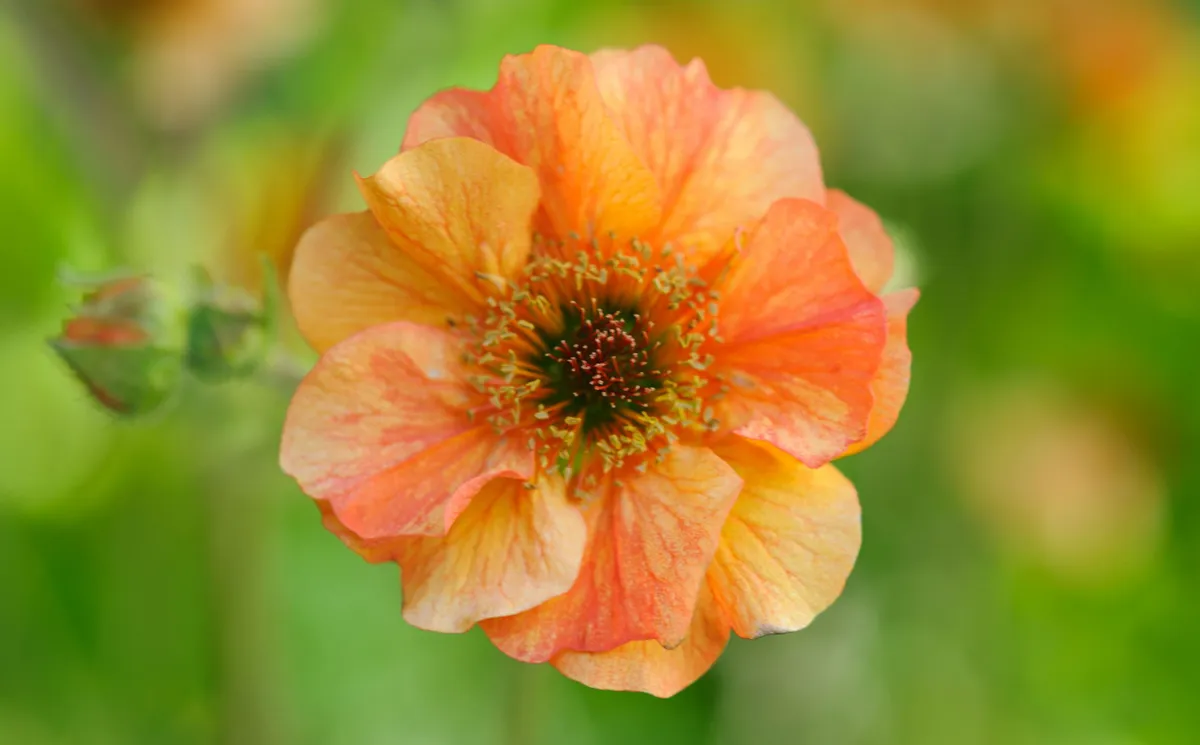
The hairy foliage of geums is a slug and snail free zone and forms a robust leafy backdrop to the brightly coloured flowers. They grow and flower best in full sun and well-drained soil, though they can also do well in part shade. Both ‘Scarlet Tempest’ and ‘Totally Tangerine’ (see above) are long flowering modern varieties, while yellow-flowered ‘Lady Stratheden’ which blooms from spring to mid-summer is much older but still an excellent choice.
Here's how to grow geums
Peonies

Peonies have a famously short-lived flowering season, but their spectacular display lives on in the memory. The plants are long-lived too and the slug-proof leaves of some cultivars are deep red when young in spring and again in autumn. Grow them in full sun and well-drained soil, plant tubers just below the soil surface and enjoy the show of cultivars like ‘Bowl of Beauty’, ‘Festiva Maxima’ and ‘Madame Gaudichau’.
Here's how to grow peonies
Heuchera

Heuchera are mainly grown for their brightly coloured leaves which luckily aren’t popular with slugs. The long spikes of flowers are also attractive; some plants have very large, bright blooms. They can be grown in pots or the ground, sun or shade, depending on leaf colour and don’t like soggy soil. ‘Marmalade’ (AGM) and Lime Marmalde (AGM) are both good choices, as is deep purple ‘Palace Purple’, but there are many, many more.
Discover this winter pot display using heuchera
Alchemilla mollis
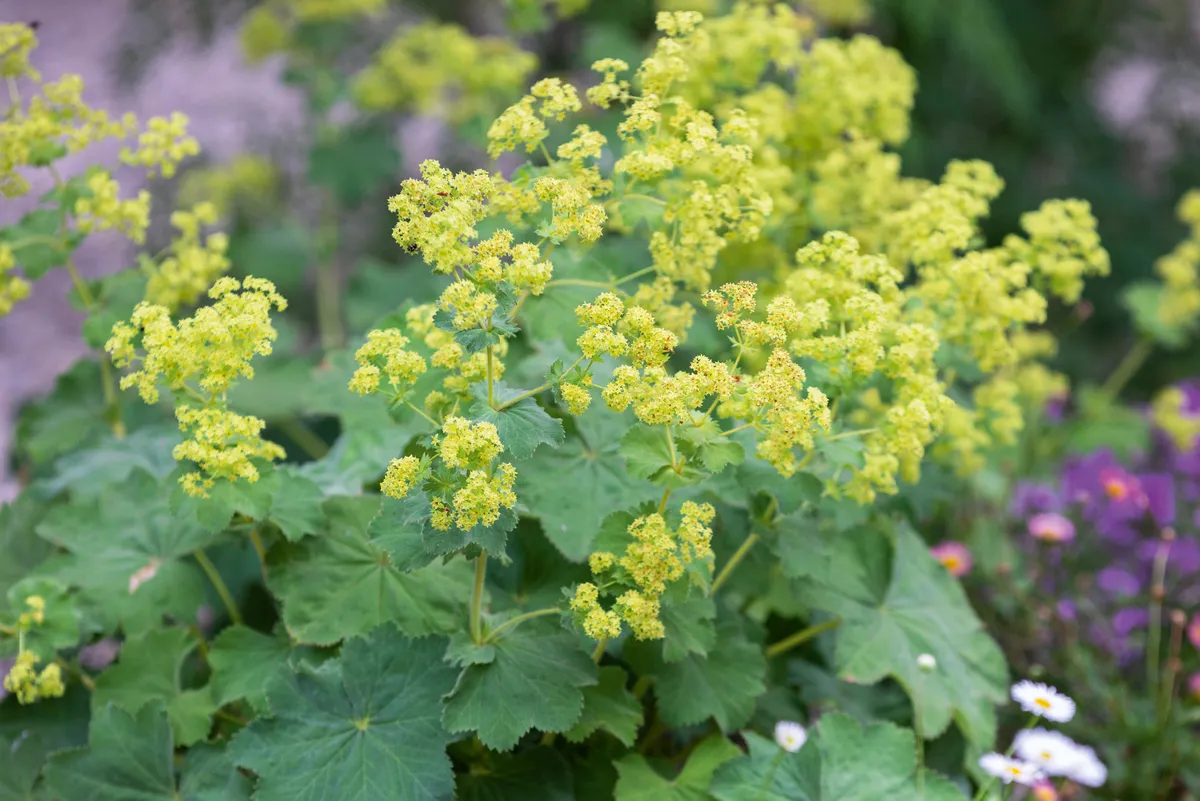
The furry leaves of lady’s mantle repel slugs and snails and collect beautiful droplets of water when it rains. Their woody stems can spread into large clumps, which will be covered with sprays of lime green flowers in early to mid-summer. They are enthusiastic self-seeders, but are easily pulled out if you don’t want too many. Lady’s mantle is drought tolerant and can be grown in any soil, in sun or part-shade.
Penstemon
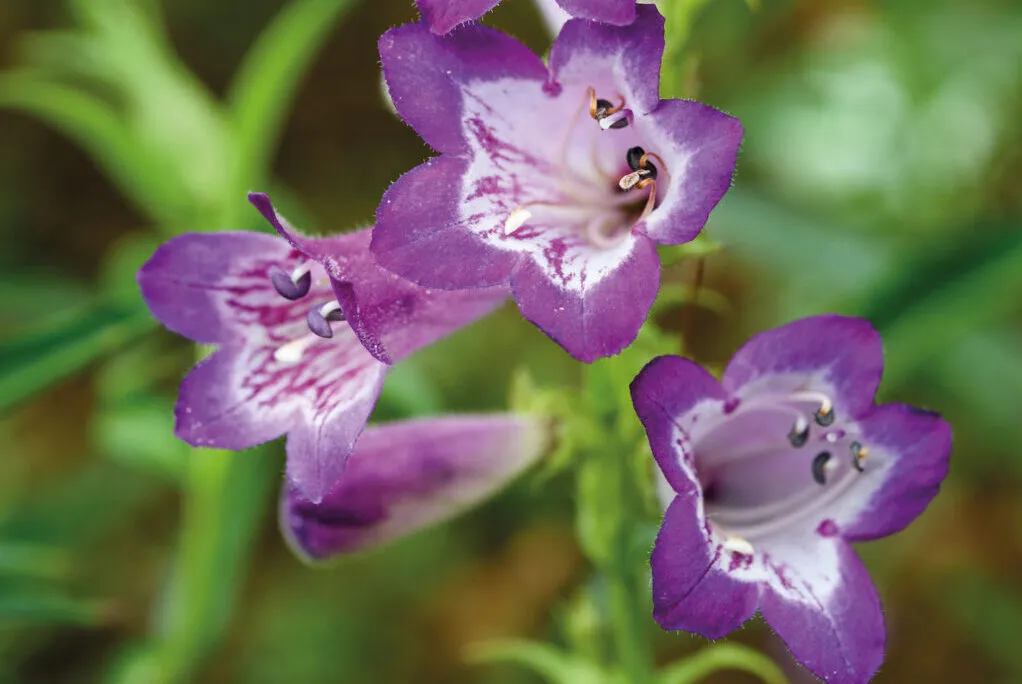
Light and airy penstemon are very long flowering, blooming from early summer to the first frosts, although the plants themselves aren’t always long lived. Take cuttings of your favourites. They grow best in full sun in well-drained soil that doesn’t dry out too much in summer. Of the many cultivars on offer ‘Hidcote Pink’ (AGM) has lovely markings, ‘Raven’ (AGM) is darkly handsome and ‘Pensham Just Jayne’ (AGM) is elegant.
Here's everything you need to know about penstemon
Lilies

These summer flowering bulbs might fall prey to the scarlet lily beetle unless you are vigilant, but slugs and snails won’t trouble them. They’re easy to grow in most gardens, although you need to choose the right species for your soil. Oriental hybrids need acid soil while Asiatic hybrids, martagon lilies and scented regal lilies can be grown in any soil. Their flowers are spectacular in mid to late summer.
Salvias

While some salvias attract slugs when new leaves emerge in spring, their hairy, oily and aromatic foliage means damage is normally minimal. Salvia microphylla ‘Cerro Potosi’ (AGM), which might need some protection from frost, and Salvia x jamensis ‘Nactvlinder’ (AGM) are particularly resistant, while among the hardier varieties Salvia nemerosa ’Amethyst’ (AGM) and Salvia x sylvestris ‘Schneehugel’ are usually free from damage. Grow them in full sun and well-drained soil.
Here are the best salvias to grow for your garden
Hardy geraniums

Hardy geraniums are easy, cheery, plants which can be in flower for months. There are species and cultivars suited to sun and shade, dry soil and moist, although they do need good drainage, and if slugs do show an interest, they soon outgrow any damage. The choice is vast, but you might go for the vigorous ‘Orion’ mid-summer flowering ‘Rozanne’, early flowering Geranium phaeum or dainty Geranium sanguisorba var. striatum (AGM).
Here are the best hardy geraniums to grow
Grasses
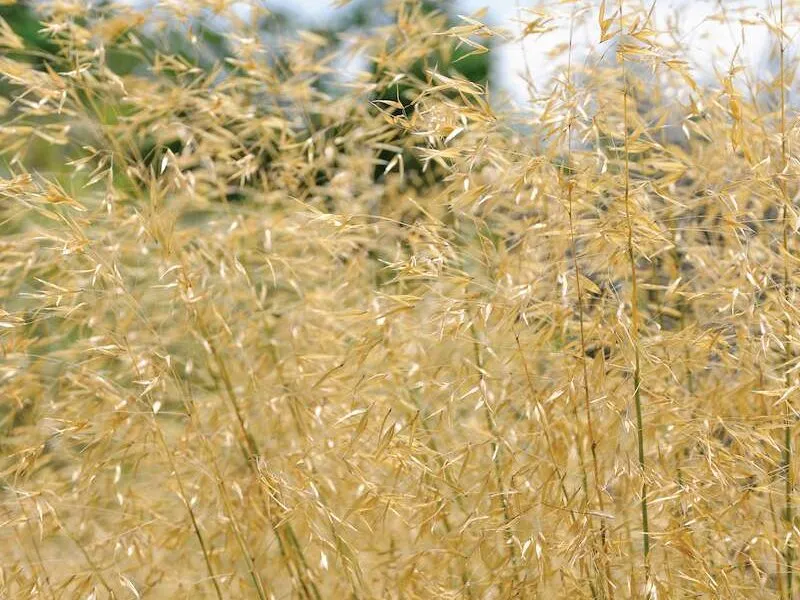
Grasses are perfect companions for flowering plants, bringing different elements to your borders with their arching shapes, airy flower heads and movement on breezy days. The choice is huge, and can be colourful or subtle, variegated or plain, taller than you or ground hugging. There are grasses for most soil types and situations and if you include rushes and sedges there is even more choice. Most have few pests.
Great ornamental grasses to grow
Alstroemeria

For a plant that looks so exotic, alstroemeria is easy to grow and if young shoots do attract molluscs, they grow fast and soon recover. They’re best grown in sun and like rich soil, plus they should be deeply mulched in their first winter after planting but are hardy once well established. ‘Indian Summer’ (see above) is an outstanding modern cultivar, as is ‘Summer Snow’. Shorter varieties such as the Intacancha series are ideal for containers.
Veronicas
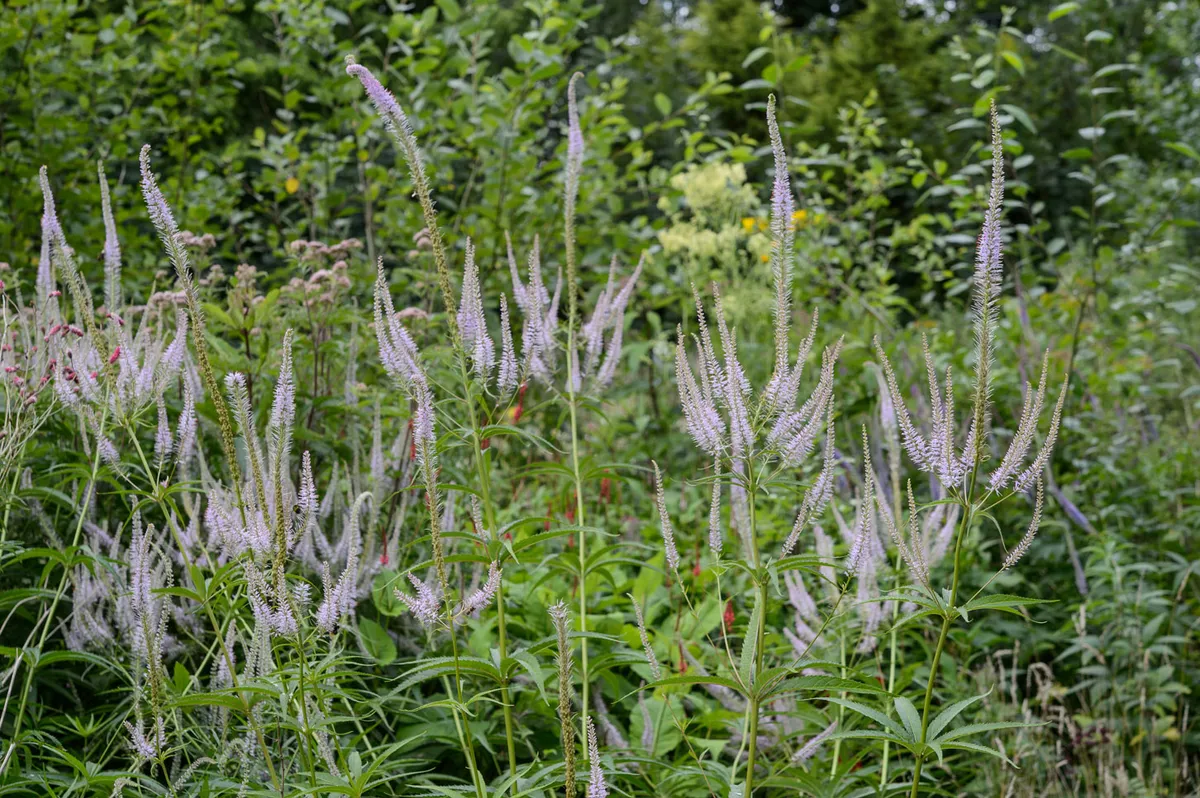
Herbaceous perennial veronicas are great for creating vertical accents in borders and are popular cottage garden plants that happily hold no appeal for slugs and snails. They flower from mid-summer to autumn and do best in full sun or light shade, while soil should be well drained but not dry; they will need to be watered in dry spells. Try Veronicastrum longifolia ‘Charlotte’, Veronicastrum longifolia ‘Pink Damask’, Veronicastrum spicata ‘Red Fox’, or Veronicastrum spicata ‘Royal Candles’
Here's how to grow veronicastrum
Achillea

The flat flower heads of achillea form a welcome contrasting shape in borders. They’re hardy but not necessarily long lived so you might need to replace them from time to time, and they are quite aromatic so won’t attract slugs and snails. They need sun and well-drained soil to thrive. Achillea fillipendulina ‘Cloth of Gold’ is a statuesque stunner, while smaller species and cultivars such as Achillea millefolium ‘Lilac Beauty’ are better for smaller gardens.
Crocosmia

Native to South Africa, crocosmia has become a staple of UK gardens. Their brightly coloured arching flower heads, surrounded by strappy leaves light up the garden in late summer. Grow in full sun or light shade and make sure soil stays moist in summer. Crocosmia ‘Lucifer’ (AGM) is a tall, bright red variety, Crocosmia x crocosmiiflora ‘Emily Mckenzie’ (AGM) a great orange and ‘Paul’s Best Yellow’ speaks for itself.
How to grow and care for crocosmia
Helenium

The dusky yellow and orange colours of this flowering daisy are well suited to the mellow days of late summer and autumn. Fresh spring growth sometimes attracts slugs and snails, but once past that stage they’re left alone. They’re easy to grow as long as they’re in a sunny spot and the soil isn’t too heavy or wet. Try ‘Moorheim Beauty’ (AGM), ‘Sahin’s Early Flowerer’ (AGM) or Helenium autumnale ‘Short and Sassy’.
Here's great orange plants for the garden
Hylotelephium

Upright, succulent leaved hylotelephium, until recently called sedum, are drought tolerant as well as slug and snail free. They prefer free-draining, poor, alkaline soil and can become soft and floppy if grown in rich, damp soil, although you can cut them back by half in late May to solve that problem. They also like sun. Good choices include Hylotelephium ‘Matrona’ (AGM), ‘Mr Goodbud’ (AGM) and Hylotelephium telephium ‘Purple Emperor’ (AGM).
Here's great drought tolerant plants for your garden
Japanese anemone

Autumn flowering Japanese anemone are a fresh and welcome sight as so many other plants fade in late summer. Some varieties are notorious for running amok through borders, while others, such as Anemone x hybrida ‘September Charm’ and ‘Bressingham Glow’ tend to form clumps, and compact varieties such as Anemone x hybrida ‘Pretty Lady Emily’ are much less likely to run. They can be grown in sun or shade and like moist soil that doesn’t waterlog in winter.
Here's our grow guide to Japanese anemone
Rudbeckia fulgida

The yellow daisy flowers of Black-eyed Susan open in late summer. They are easy plants to grow in sun or part-shade and well-drained soil. Young growth might attract some slug damage, but the hairy leaves of larger plants are usually untouched. R. fulgida var deamii (AGM) and R. fulgida var. sulivantii ‘Goldsturm’ (AGM) are classic varieties while R. fulgida ‘Little Goldstar’ is more compact and R. fulgida ‘Early Bird Gold’ flowers a month or two earlier than others
Tender perennials the slugs won't eat
For summer colour in baskets and pots you find you need to avoid petunias, calabrocha, pansies and violas which slugs and snails love. These are much less likely to be eaten.
Begonias
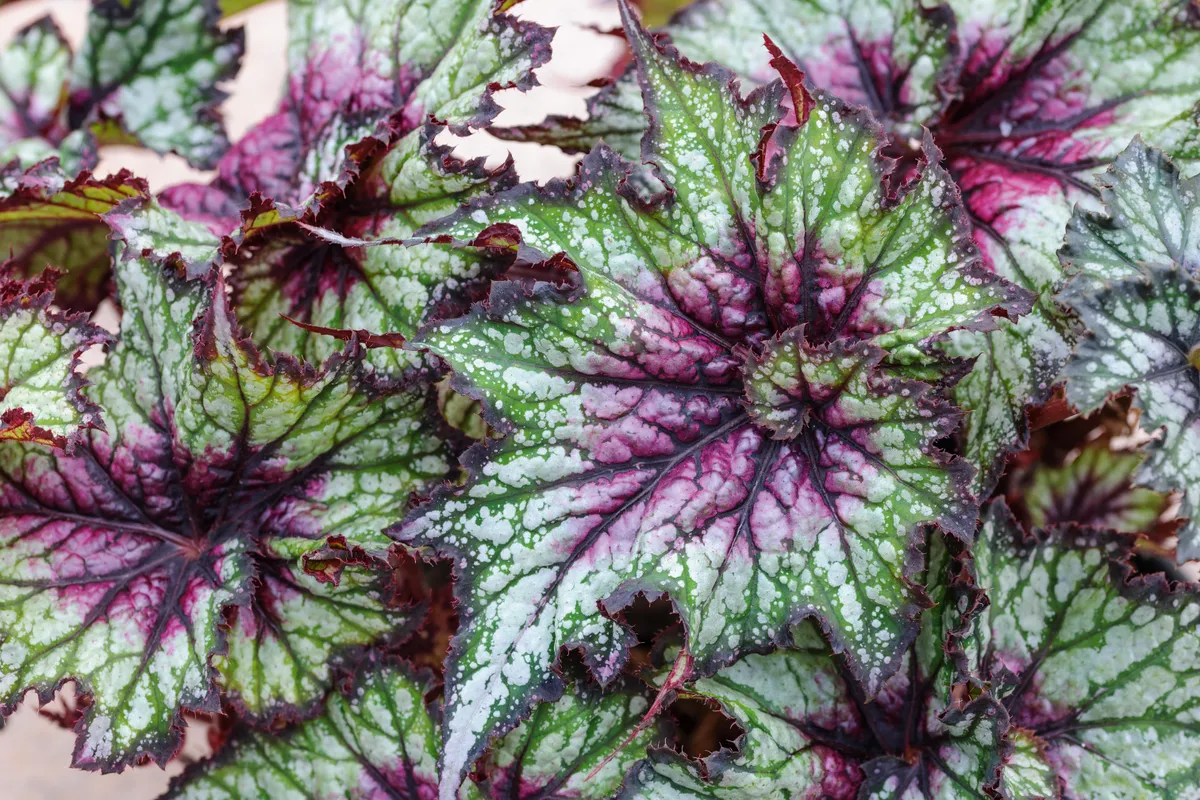
Begonias are another hugely diverse range of plants. For container growing the most common varieties are tuberous cultivars such as the Million Kisses series and Illumination series, both of which have a slightly trailing habit, or there are fibrous rooted cultivars of Begonia semperflorens, which are more upright and can also be grown in the ground. They grow and flower best in part shade and need moist but well-drained soil or compost.
Here's how to grow the best begonias
Diascia

The Diascia sold for summer containers fill a similar niche to lobelia with their bushy, trailing shape and mass of brightly coloured flowers, but they can cope with slightly less regular watering. Their colour range tends towards hot pink and orange, but also white or pastel colours too. Any in the extensive Diamond series will be a reliable choice. Diascia are borderline hardy and might survive winter with some shelter.
Fuchsias
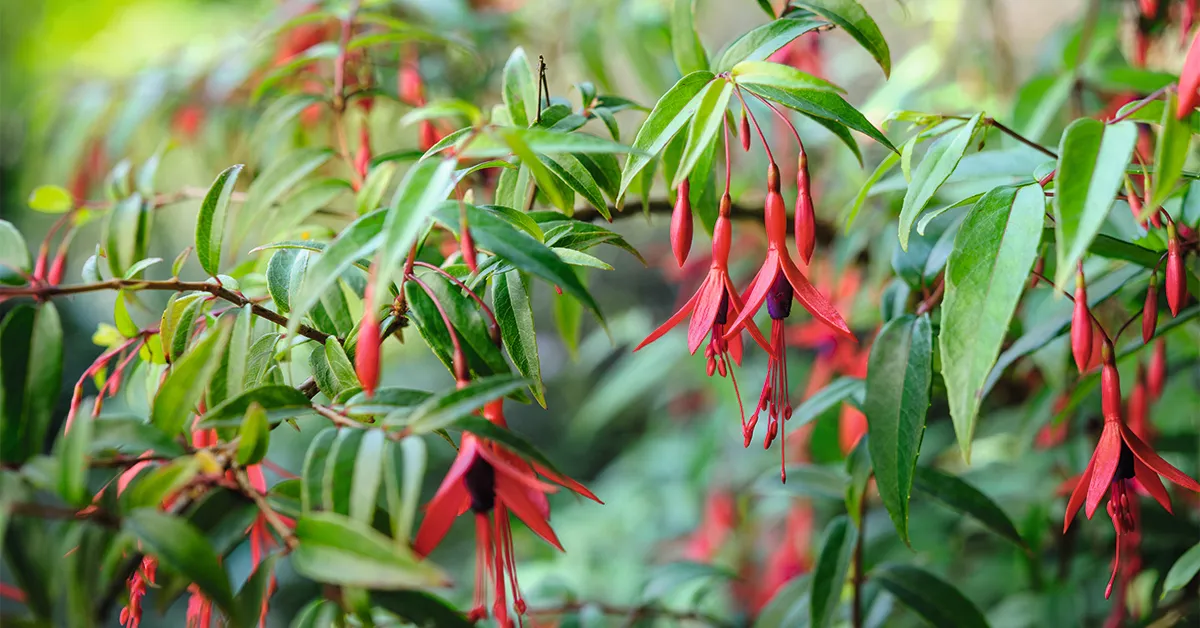
Versatile fuchsias can be grown in part shade or sun. Trailing ones are perfect for hanging baskets and the edges of pots, while the bushy ones are good in pots or the ground. There are hardy cultivars such as ‘Genii’ (AGM) and ‘Garden News’ (AGM) and tender ones like ‘Dancing Flame’ (AGM) and long flowered ‘Thalia’ (AGM). Slugs don’t like them but watch out for vine weevils and fuchsia gall midge which might infect buds.
Here's how to grow fuchsia
Gaillardia

These bold, bright daisies can be annual or perennial plants, though often short lived if perennial. They’re far hardier than you’d expect to look at them but they don’t cope well with winter wet, which is more likely to kill them than cold. They need well-drained soil and full sun to flower well and are ideal for pots or the front of a border. G x grandiflora ‘Mesa Bright Bicolour’ is a popular short-lived perennial.
Impatiens walleriana
New breeding has brought the much-loved Busy Lizzie back into our gardens after problems with downy mildew made them all but impossible to grow for a while. The new varieties are just as adaptable as the old, flowering well in full sun or full shade. They like well-drained soil that retains some moisture. Colours can be bright and saturated or pale pastels. Look out for the Beacon series which has good disease resistance.
Lobelia

The lobelia we usually grow in summer containers is usually cultivars of the trailing Lobelia erinus. Lobelia like moisture so it’s important to keep your pots and baskets regularly watered or these will be the first to wilt. While a lot of cultivars, such as the lovely ‘Cambridge Blue’ (AGM) and ‘Waterfall Blue’ (AGM) are in shades of blue, you can also get white and pink flowered plants, or buy a mix of colours.
Here's our grow guide to lobelia
Pelargoniums

These amazingly diverse plants are easy to grow and can be pumping out flowers from early summer until the first frosts. Make sure your compost or soil is free draining but don’t let them dry out too much, and grow them in full sun. Trailing ivy-leaved pelargoniums are a favourite for window boxes, baskets and pot edges, while the more upright, Zonal, Regal or Angel cultivars can be grown in pots or in the ground.
Annual plants and flowers that slugs won't like
Many popular annuals are prone to slug and snail damage with zinnias, cosmos and sunflowers topping the mollusc menu. Sowing seeds directly into soil is more likely to result in losses, so start plants off in pots before planting out when they’re larger, or just grow these slug proof varieties
Centaurea cyanus

The bright blue cornflower draws your eye whether it’s grown among a meadow mix of annual plants or as an individual plant in a border or container. It’s best to sow seeds directly into the soil or compost where you want them to grow, although you can transplant them if you start the seeds in small pots or modules. Either way they rarely seem troubled by slugs or snails. They prefer well drained soil that’s low in nutrients and flower best in full sun.
Borago officinalis

A vigorous and bristly annual plant, very few things would try to eat borage. The flowers, often added to drinks for their cucumber flavour, are usually blue but there is a white variety, Borago officinalis ‘Alba’ and they can be pink. It grows easily from seed in almost any type of soil in full sun, and its tap root makes it drought tolerant, although it grows best in moist soil. It self-seeds easily too.
Calendula

Calendula are commonly called pot marigolds but unlike other marigolds, which are species of Tagetes, they are not a particular favourite of slugs and snails. Their cheery flowers are often orange or yellow, such as in the Fiesta Gitana group (AGM), but breeding has led to more variety from cultivars like ‘Snow Princess’ and ‘Sherbert Fizz’. They grow well in light, well-drained soil in full sun or part shade and will often self-seed.
Here's how to ace at companion planting
Limnanthes douglasii (AGM)

Poached egg plant is a prettier annual than its name suggests, although you can easily see how it came to be called that. It can be sown directly into soil in autumn or spring, though should be protected from hard frosts over winter if sown in autumn. Plants are drought resistant and like any type of moist but well-drained soil, and full sun. The perky blooms will last from summer to autumn.
Nigella damascena
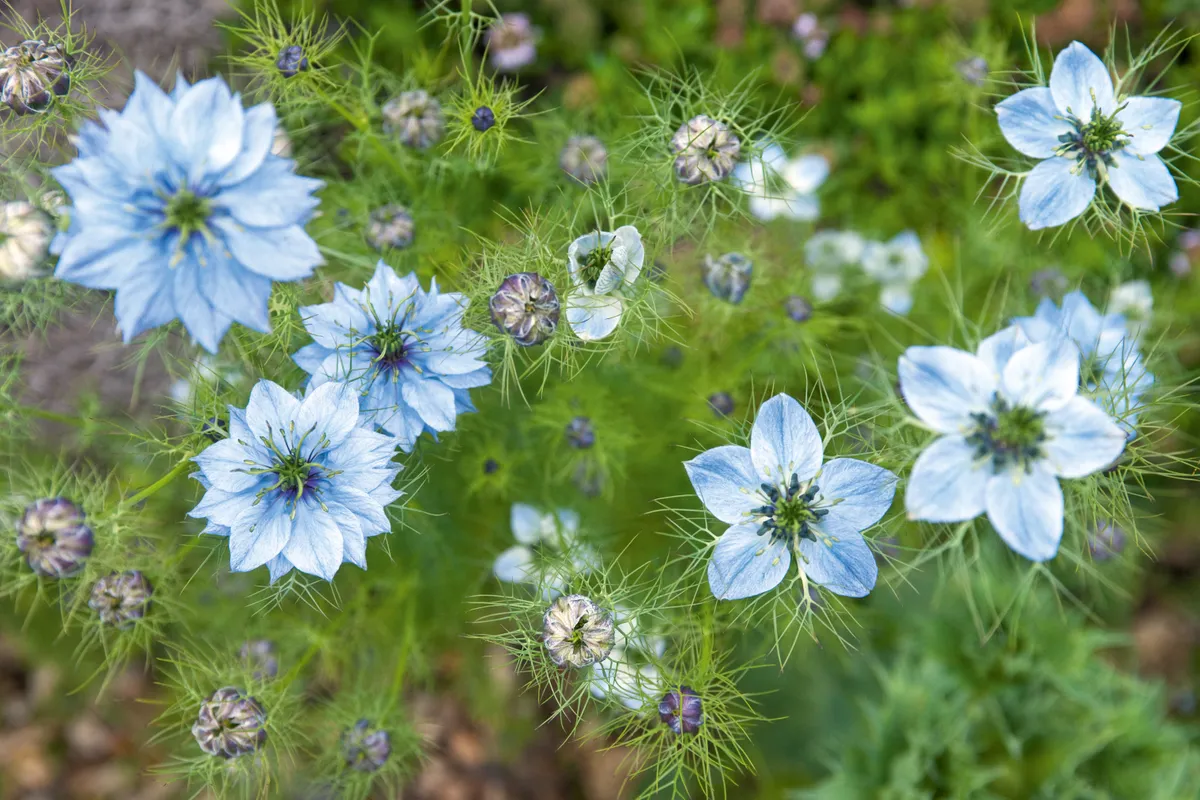
Love-in-a-mist might be an annual, but it self-seeds so easily that it will normally reappear reliably every year. The flowers, sitting among clouds of ferny foliage, have distinctive spidery centres and are followed by equally distinctive, plump seed heads. It likes well-drained soil with a pH that’s neutral to alkaline, and full sun. Flowers are typically in shades of blue, although the Persian Jewels group also includes pink and white flowered plants.
Orlaya grandiflora

White laceflower is an elegant plant with ferny foliage that is untroubled by pests, and airy, flat flower heads. It forms a good foil to the bright colours of so many annuals and combines well with most perennials. It is a very hardy annual and flowers from early to late summer, often self-seeding in following years. It is best grown in full sun and like most annuals, prefers light, well-drained soil with low fertility.
Papaver

There are several species of annual poppies that are untroubled by slugs or snails. The most often grown are the common red poppy, Papaver rhoeas, the Caucasian scarlet poppy, Papaver commutatum and the opium poppy, Papaver somniferum, which has some of the showiest cultivars of the three species. They are all hardy and are best sown directly into soil that is well-drained and fertile. They like sun, although P. somniferum can cope with some shade.
Here are the best poppies for your garden
Tropaeolum majus

Nasturtiums are quick growing in full sun and unfussy about soil type as long as it’s well-drained and preferably poor; rich soil encourages leafy growth over flowers. ‘Empress of India’ (AGM) is a classic red orange, ‘Alaska Series’ (AGM) and ‘Cherry Rose Jewel’ offer more unusual colours. Untroubled by slugs and snails, nasturtiums can attract other pests and are sometimes grown with vegetables to lure blackfly from beans and white butterflies from brassicas.
Looking for more great flowers? Here are 100 beautiful plants and flowers




